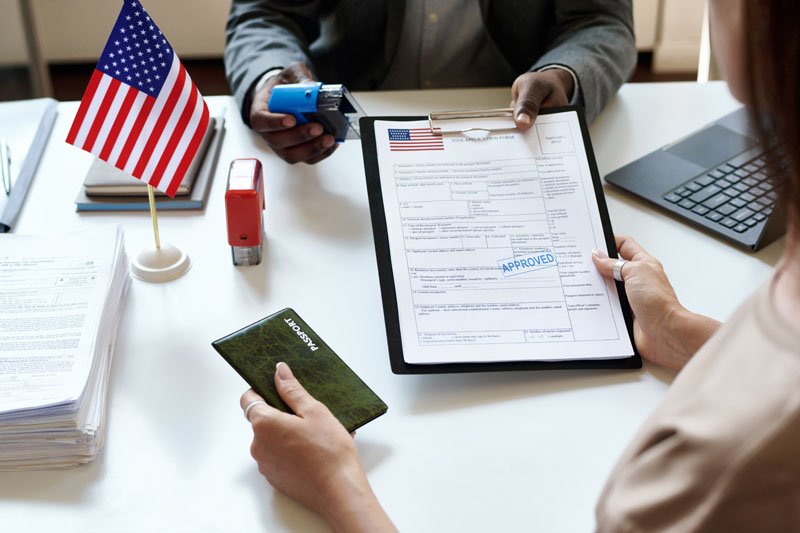If you’ve recently been approved for an H-1B visa, congratulations; this is a major milestone! However, if you are abroad, before you can enter the United States and begin employment, there’s one final step: H-1B visa stamping. This guide covers the essentials of the stamping process, from required documents to interview tips, so you can move forward with confidence and avoid delays.
What is H-1B Visa Stamping?
H-1B visa stamping serves as ultimate proof of your legal status to work in the United States under the H-1B classification. You must attend a consulate interview at a US Embassy or Consulate abroad to receive an H-1B visa stamp on your passport. In order to be eligible for the stamp, you must have an approved H-1B petition by the USCIS; you must possess a valid I-797 approval notice signifying your petition’s approval.
We recommend that you make preparations for visa stamping at least 90 days or three months ahead of your intended employment start date, as processing times vary by consulate, and delays could affect your ability to begin work on time. Fees will also vary based on the embassy and consulate. Ultimately, it is important to keep track of fees and wait times based on your local embassy, consulate, or visa center.
Preparing for and Scheduling the Interview
Before attending the H-1B visa stamping interview, prepare the following documents and forms to bring with you to the embassy or consulate.
Required documents:
- A valid passport (valid at least six months beyond the intended period of stay in the US);
- Form I-797 (H-1B approval notice);
- A copy of the Labor Condition Application approved by the Department of Labor;
- A copy of the employment offer letter and a resume; and
- Educational certificates including diplomas and transcripts.
Application Forms:
- DS-160 form; and
- Form I-129.
After completing the DS-160, you will need to schedule an interview at the US embassy or consulate in your home country. Each consulate and embassy has its own requirements for interviews. Generally, though, they will require that you bring the following documents to your interview:
- A printed copy of the appointment letter;
- A copy of the DS-160 confirmation page with a barcode; and
- The original Form I-797 approval notice.
You may also be required to attend a fingerprinting appointment prior to your interview. However, this may depend on the rules of your local consulate or embassy.
H-1B Visa Stamping Procedure
The procedure to receive an H-1B visa stamp is a multi-step process. You can track your status on the CEAC portal.
- Attend the Visa Interview: You’ll be asked about your background, qualifications, and job offer. Bring all required documents to support your responses.
- Biometrics: You must provide fingerprints and a photo for identity verification and background checks.
- Processing & Approval: Processing times vary. Once approved, your passport will be returned with the H-1B visa stamp.
After Visa Stamping
After the visa stamping process is complete, you will receive your passport with the H-1B visa stamp. It is important to carefully review the visa stamp to ensure that all information is accurate, including the start and end dates of the visa validity. If there are any errors, you should contact the U.S. embassy or consulate immediately.
When entering the US, it is important to note that the H-1B visa stamp is not a guarantee of entry into the U.S. The border security officer has the final word on whether you are admissible. Additionally, the H-1B visa stamp does not guarantee that you will be able to extend your stay in the U.S. beyond the end date listed on the visa stamp. If you wish to extend your stay, you will need to apply for an extension before the end date on the visa stamp.
Another important consideration is that you can only enter the US ten days ahead of your intended start of employment. Any time before that, you will not be authorized to enter.
You may also be interested: Basics of an H-1B Visa
Why hire an immigration attorney?
Even after your H-1B visa is approved, the journey isn’t over. From scheduling your visa stamping appointment to preparing the right documents and understanding travel timelines, each step is critical to a smooth entry into the United States. Working with an experienced immigration attorney can help you avoid costly mistakes, reduce processing delays, and give you the peace of mind that everything is being handled correctly. Contact us today to schedule a consultation and get the personalized guidance you need to secure your new status in the U.S.!




